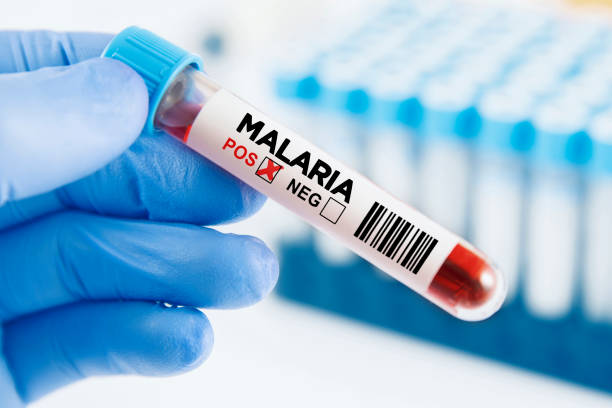Malaria, a life-threatening disease caused by Plasmodium parasites, continues to be a major public health challenge in many tropical and subtropical regions. The disease is transmitted to humans through the bites of infected female Anopheles mosquitoes. Despite advances in treatment and prevention, malaria remains prevalent, particularly in sub-Saharan Africa. One of the most effective ways to reduce malaria cases is through mosquito control. This article explores the role of mosquito control in reducing malaria cases and highlights various strategies employed to combat this deadly disease.
The Importance of Mosquito Control
Mosquito control is crucial in the fight against malaria because it targets the primary vector responsible for transmitting the disease. By reducing mosquito populations and minimizing human-mosquito contact, the transmission cycle of malaria can be interrupted, leading to a decrease in malaria cases and deaths. Effective mosquito control measures can significantly reduce the burden of malaria and improve public health outcomes.
Key Mosquito Control Strategies
Several mosquito control strategies have been developed and implemented to combat malaria. These strategies can be broadly categorized into environmental management, chemical control, biological control, and personal protective measures.
1. Environmental Management
Environmental management involves modifying or manipulating the environment to reduce mosquito breeding sites. This approach focuses on eliminating stagnant water sources where mosquitoes lay their eggs. Common environmental management practices include:
- Drainage: Proper drainage systems prevent water from accumulating in areas such as ditches, gutters, and puddles, reducing mosquito breeding habitats.
- Larval Source Management (LSM): LSM involves treating water bodies with larvicides, which target and kill mosquito larvae before they can mature into adult mosquitoes.
- Community Clean-Up: Encouraging communities to remove containers, tires, and other items that can collect water helps reduce potential breeding sites.
2. Chemical Control
Chemical control involves using insecticides to kill mosquitoes at various stages of their life cycle. Two widely used chemical control methods are:
- Indoor Residual Spraying (IRS): IRS involves spraying insecticides on the interior walls and surfaces of homes, where mosquitoes are likely to rest. This method provides long-lasting protection by killing mosquitoes that come into contact with treated surfaces.
- Insecticide-Treated Bed Nets (ITNs): ITNs are bed nets treated with insecticides that repel or kill mosquitoes. Sleeping under ITNs provides a physical barrier against mosquito bites during nighttime, when Anopheles mosquitoes are most active.
3. Biological Control
Biological control involves using natural predators or agents to control mosquito populations. Some effective biological control methods include:
- Larvivorous Fish: Introducing fish species that feed on mosquito larvae, such as Gambusia affinis, into water bodies can help reduce mosquito populations.
- Bacterial Larvicides: Bacteria such as Bacillus thuringiensis israelensis (Bti) produce toxins that specifically target and kill mosquito larvae without harming other aquatic organisms.
- Sterile Insect Technique (SIT): SIT involves releasing sterilized male mosquitoes into the environment. These males mate with wild female mosquitoes, resulting in no offspring and a gradual reduction in mosquito populations.
4. Personal Protective Measures
Individuals can take personal protective measures to reduce their risk of mosquito bites and malaria infection. These measures include:
- Using Insect Repellents: Applying insect repellents containing DEET, picaridin, or IR3535 on exposed skin and clothing can effectively repel mosquitoes.
- Wearing Protective Clothing: Wearing long-sleeved shirts, long pants, and socks minimizes skin exposure to mosquito bites.
- Installing Window and Door Screens: Installing screens on windows and doors prevents mosquitoes from entering homes.
Challenges and Future Directions
While mosquito control has proven to be effective in reducing malaria cases, several challenges remain. Insecticide resistance is a growing concern, as mosquitoes develop resistance to commonly used insecticides, rendering them less effective. Additionally, the cost and logistical challenges of implementing and maintaining mosquito control programs can be significant, particularly in resource-limited settings.
To address these challenges, researchers are exploring innovative approaches and new technologies. For example, genetic engineering techniques, such as gene drive systems, are being developed to reduce mosquito populations or make mosquitoes resistant to malaria parasites. Additionally, integrating mosquito control with other malaria control strategies, such as rapid diagnostic testing and effective treatment, can enhance overall effectiveness.
Conclusion
Mosquito control plays a pivotal role in reducing malaria cases and preventing the spread of this deadly disease. By targeting the primary vector responsible for malaria transmission, mosquito control measures can significantly reduce the burden of malaria and improve public health outcomes. Continued research, innovation, and investment in mosquito control are essential to achieving a malaria-free world. By working together and implementing effective mosquito control strategies, we can make significant strides towards eradicating malaria and ensuring a healthier future for all.



